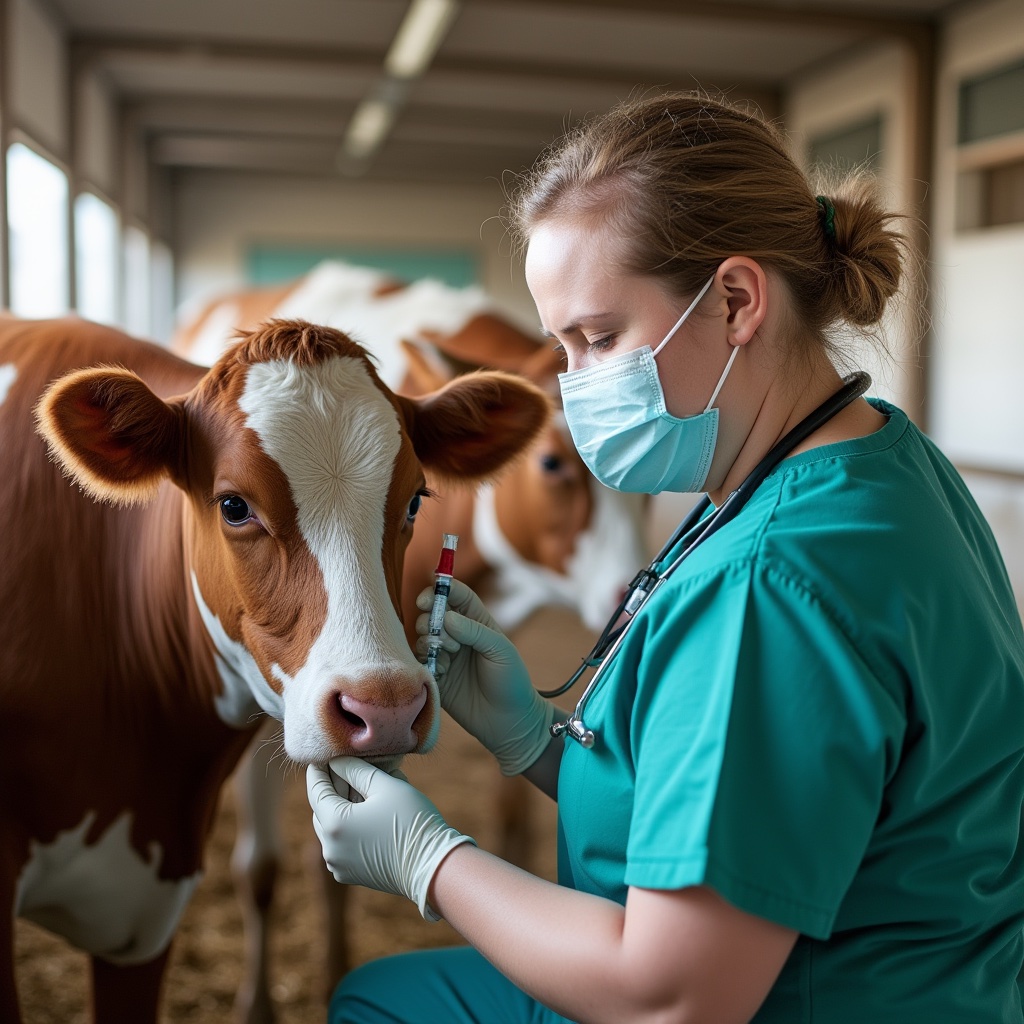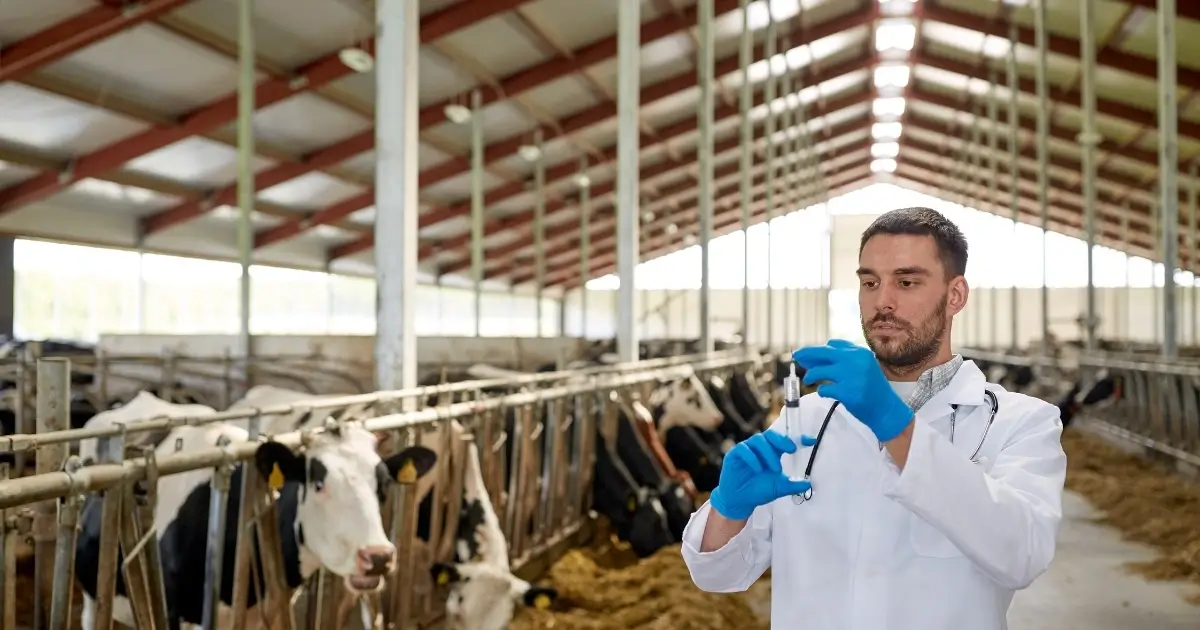Table of Contents
Antibiotic resistance is increasingly being recognized as a global health crisis, but one often overlooked contributor is agriculture. Antibiotics are widely used in farming, particularly in the livestock industry, not just to treat sick animals but also to promote growth and prevent disease. This extensive use of antibiotics in agriculture has been linked to the rise of antibiotic-resistant bacteria—a threat that affects both human and animal health. In this article, we will explore the role of agriculture in the development of antibiotic resistance, its impact on public health, and what can be done to mitigate this growing challenge.
Key Takeaways
- Antibiotic Overuse in Agriculture: Widespread use of antibiotics in farming, especially in livestock, drives antibiotic resistance.
- Health Risks: Resistant bacteria from agriculture can infect humans, posing serious public health risks.
- Transmission Pathways: Resistant bacteria spread through contaminated food, direct animal contact, and environmental exposure.
- Regulation & Responsible Practices: Strict regulations and sustainable farming practices can help reduce antibiotic use in agriculture.
- Consumer Role: Choosing antibiotic-free products encourages responsible farming, reducing the need for antibiotics in agriculture.
The Widespread Use of Antibiotics in Agriculture
In modern agriculture, antibiotics play a crucial role in maintaining animal health and increasing productivity. However, their widespread and often routine use, particularly in large-scale industrial farming, has raised concerns about their contribution to antibiotic resistance.
Antibiotics for Disease Prevention and Growth Promotion
In many countries, farmers routinely administer antibiotics to healthy animals to prevent the spread of diseases in crowded or unsanitary conditions. In some cases, antibiotics are also used as growth promoters, enabling animals to gain weight more quickly, which increases meat production. According to the World Health Organization (WHO), the use of antibiotics for growth promotion is a significant contributor to the development of resistant bacteria.
In the U.S., approximately 80% of all antibiotics sold are used in animal agriculture, primarily in livestock such as cattle, pigs, and poultry. This widespread use accelerates the evolution of antibiotic-resistant bacteria in animal populations, which can be transmitted to humans through direct contact, contaminated food, or the environment .
Antibiotic-Resistant Bacteria in Animal Farming
When antibiotics are used extensively in farming, bacteria in the animals’ bodies are exposed to these drugs. While most bacteria are killed, some develop resistance through mutations or the acquisition of resistance genes. These antibiotic-resistant bacteria can then spread to humans in several ways, including:
- Food consumption: Bacteria present in animal products like meat, eggs, and dairy can transfer to humans if the food is not cooked properly.
- Direct contact with animals: Farmworkers and others who handle livestock can be directly exposed to resistant bacteria.
- Environmental contamination: Animal waste containing resistant bacteria can contaminate soil and water, further spreading the bacteria to humans and other animals.
How Agriculture Contributes to Antibiotic Resistance
The overuse of antibiotics in agriculture creates an ideal environment for bacteria to develop resistance. This resistance can then spread to humans, contributing to global antibiotic resistance. Here are the key ways agriculture contributes to this problem:
Development of Resistant Bacteria in Livestock
When antibiotics are given to animals, they kill susceptible bacteria but allow resistant bacteria to survive and multiply. These resistant bacteria can spread among animals and eventually enter the human food chain. Common resistant bacteria linked to agriculture include:
- Salmonella: Often found in raw poultry and eggs, resistant strains of Salmonella can cause severe foodborne illness in humans.
- Campylobacter: Another common foodborne pathogen, resistant Campylobacter can cause diarrhea, fever, and cramps in humans.
- Escherichia coli (E. coli): Some strains of E. coli can become resistant to antibiotics and cause urinary tract infections, food poisoning, and other illnesses in humans.
According to the Centers for Disease Control and Prevention (CDC), at least 20% of resistant infections in humans are linked to bacteria from food and animals .

Spread of Resistance Genes via Horizontal Gene Transfer
Bacteria can acquire resistance genes through a process called horizontal gene transfer, where genetic material is shared between different bacterial species. This means that even bacteria that have not been directly exposed to antibiotics can become resistant by acquiring resistance genes from other bacteria. In agricultural environments where antibiotics are used extensively, the likelihood of resistant bacteria passing their resistance genes to other bacteria increases.
Environmental Impact and Contamination
Agricultural use of antibiotics not only affects the animals being treated but also impacts the surrounding environment. Animal waste, often used as fertilizer, can contain antibiotic residues and resistant bacteria. This waste can contaminate soil and water sources, further spreading resistant bacteria into the environment and increasing the risk of human exposure. A study published in Nature found that antibiotic-resistant bacteria from livestock operations can persist in the environment for extended periods, raising concerns about the long-term impact of antibiotic use in farming .
The Impact of agricultural antibiotic use on public health
The spread of antibiotic-resistant bacteria from agriculture has serious implications for public health. As more bacteria develop resistance, it becomes harder to treat common infections, leading to increased illness, longer hospital stays, and higher mortality rates.
Foodborne Illnesses and Resistant Infections
Foodborne illnesses caused by resistant bacteria are a significant concern. Infections from resistant Salmonella, Campylobacter, and E. coli can be more difficult to treat because standard antibiotics may no longer be effective. According to the CDC, over 400,000 infections in the U.S. each year are caused by resistant foodborne bacteria.
When infections caused by these resistant bacteria occur, they may require more powerful antibiotics, which can have more severe side effects. In some cases, there may be no effective treatment available, leading to severe complications or death.
Increased Health Care Costs and Longer Treatments
Treating infections caused by antibiotic-resistant bacteria is more expensive and complicated. Patients often require stronger antibiotics, longer courses of treatment, or even hospitalization. The World Bank estimates that by 2050, antibiotic resistance could result in global economic losses of up to $1 trillion per year due to increased healthcare costs, reduced labor productivity, and the impact on food security.
Threat to Modern Medical Practices
The rise of antibiotic resistance threatens the success of many modern medical procedures, including surgery, organ transplants, and chemotherapy. These procedures rely on antibiotics to prevent and treat infections, and without effective antibiotics, the risk of complications rises significantly.
Steps to reduce antibiotic resistance in agriculture
Addressing the role of agriculture in antibiotic resistance requires global cooperation and changes in how antibiotics are used in farming. Here are some steps that can be taken to reduce the impact of agricultural antibiotic use on public health:
Implementing Strict Regulations on Antibiotic Use
Several countries have already introduced regulations to limit the use of antibiotics in farming. For example, the European Union has banned the use of antibiotics for growth promotion since 2006. In the U.S., the Food and Drug Administration (FDA) has introduced guidelines to limit the use of medically important antibiotics in livestock, encouraging their use only for disease treatment under veterinary supervision.
Expanding and enforcing similar regulations worldwide can help reduce the unnecessary use of antibiotics in agriculture and slow the development of resistant bacteria.
Promoting Responsible Antibiotic Use
Farmers and veterinarians play a crucial role in ensuring that antibiotics are used responsibly in agriculture. Antibiotics should only be used to treat sick animals, and alternatives to antibiotics, such as improved sanitation, vaccinations, and biosecurity measures, should be prioritized to prevent disease outbreaks.
Encouraging Sustainable Farming Practices
Sustainable farming practices that prioritize animal health and biosecurity can reduce the need for antibiotics. By improving animal living conditions, such as reducing overcrowding and maintaining clean environments, farmers can lower the risk of infections and limit the need for routine antibiotic use.
Supporting Research for Alternative Solutions
Investing in research to develop alternatives to antibiotics in agriculture is critical. This includes exploring options such as probiotics, prebiotics, and vaccines to enhance animal immunity and prevent disease without relying on antibiotics. Scientists are also studying bacteriophages—viruses that specifically target bacteria—as a potential alternative to antibiotics in livestock.
Consumer Awareness and Demand for Antibiotic-Free Products
Consumers have a role to play in reducing the demand for antibiotics in agriculture by choosing antibiotic-free products. Labels such as “raised without antibiotics” or “organic” indicate that the animals were not given antibiotics, helping to promote responsible farming practices. Increased consumer demand for antibiotic-free meat can incentivize farmers to adopt sustainable, antibiotic-free methods.
The Global Need for Action
Antibiotic resistance is a global issue that requires cooperation from governments, industries, and individuals to address. The World Health Organization (WHO) has called for a coordinated effort to reduce antibiotic use in agriculture, improve infection prevention measures, and promote the development of new antibiotics and alternatives.
Public health organizations, governments, and consumers must work together to limit the spread of antibiotic-resistant bacteria and protect the effectiveness of antibiotics for future generations.
Conclusion
The use of antibiotics in agriculture is a major contributor to the rise of antibiotic resistance, a global health crisis with far-reaching consequences. Resistant bacteria from livestock can spread to humans through food, direct contact, and environmental contamination, leading to infections that are harder to treat and more dangerous.
Reducing the use of antibiotics in farming, promoting sustainable agricultural practices, and raising consumer awareness are critical steps in the fight against antibiotic resistance. By taking action now, we can help ensure that antibiotics remain effective tools in protecting both human and animal health.
References
- World Health Organization (WHO). Antibiotic Resistance: A Global Threat. WHO Publications, 2020. https://www.who.int/news-room/fact-sheets/detail/antibiotic-resistance
- Centers for Disease Control and Prevention (CDC). Antibiotic Resistance Threats in the United States, 2019. CDC, U.S. Department of Health and Human Services. https://www.cdc.gov/antimicrobial-resistance/media/pdfs/2019-ar-threats-report-508.pdf.
- Ventola, C. L. (2015). The Antibiotic Resistance Crisis: Part 1: Causes and Threats. P&T Journal, 40(4), 277-283. https://www.ncbi.nlm.nih.gov/pmc/articles/PMC4378521/
- Laxminarayan, R., et al. (2013). Antibiotic Resistance—the Need for Global Solutions. The Lancet Infectious Diseases, 13(12), 1057-1098. https://doi.org/10.1016/S1473-3099(13)70318-9.
- Food and Drug Administration (FDA). Guidance for Industry: The Judicious Use of Medically Important Antimicrobial Drugs in Food-Producing Animals. https://www.fda.gov/animal-veterinary/cvm-updates/fda-final-guidance-213-judicious-use-antimicrobials.
FAQ
- What is antibiotic resistance, and why is it a global health crisis? Antibiotic resistance occurs when bacteria evolve to withstand the drugs designed to kill them. This leads to infections that are harder to treat, causing longer illnesses, higher healthcare costs, and increased mortality.
- How does the use of antibiotics in agriculture contribute to antibiotic resistance? In agriculture, antibiotics are often used to prevent disease and promote growth in animals. This routine use encourages bacteria to develop resistance, which can spread to humans through food, direct contact with animals, and environmental contamination.
- Why are antibiotics given to animals in farming? Antibiotics are used to treat sick animals, prevent disease outbreaks, and sometimes to promote faster growth. However, these practices can lead to the development of antibiotic-resistant bacteria, which is why limiting their use is essential.
- Can antibiotic-resistant bacteria from livestock affect humans? Yes, resistant bacteria from animals can reach humans through the food chain, direct animal contact, and environmental spread (such as contaminated soil and water).
- What steps can consumers take to reduce antibiotic resistance linked to agriculture? Consumers can choose antibiotic-free or organic meat products and support policies that limit antibiotic use in farming. This helps reduce the demand for antibiotics in agriculture, encouraging more responsible practices.
